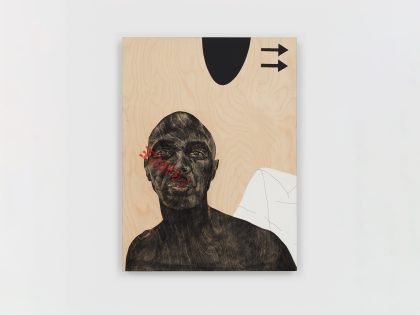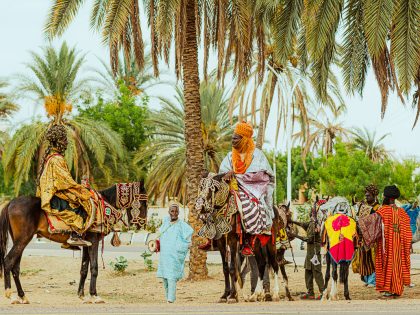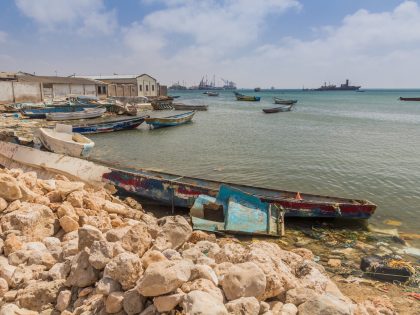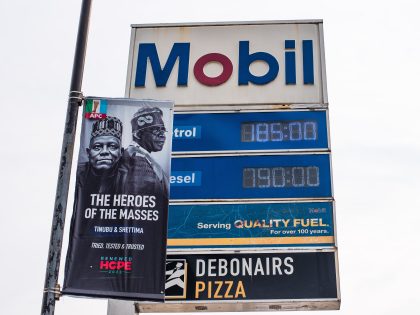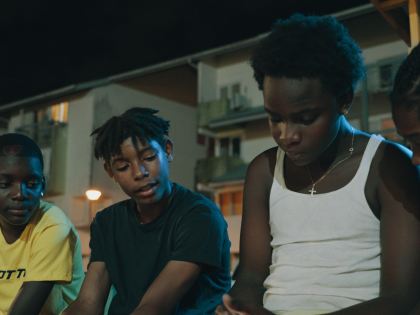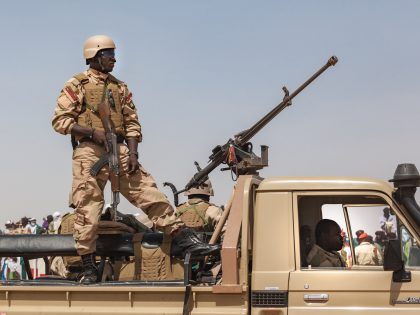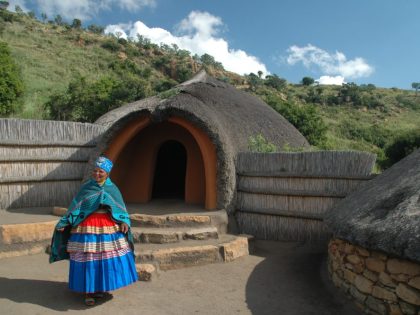What is Australia
Is there a place where white people are more committed to faux race blindness than South Africa?

Luca Penati, via Flickr CC.
The first thing that strikes you when you arrive in Australia is how racist this place is, and yet how committed many Australians are to not talking about race. As a South African I recognize this purposeful, focussed commitment to faux race blindness. Even as someone slags off Aboriginal people and immigrants, and rants about the need to “reclaim Australia,” many here will insist that they are not racist.
Last week I opened the newspaper and read a story about a white woman who called a family of neighbors who are originally from Sierra Leone “jungle bunnies” and “monkeys.” In the story the word ‘racist’ was in quotes as though she may or may not have been racist, even though her racist rant had been filmed on their phone. I was chagrined, but others I spoke to weren’t: They argued that the paper was “just trying to be neutral.”
The levels of racism amongst many white Australians seem to match the levels of denial about their being racist. And there is no doubt that the deepest and most abiding forms of racism are directed against Aboriginal people. It is as though on some psychic level, white Australians are angry with Aboriginal people for still being here, for reminding them of their sins, for refusing to conform to their own ideas about what Australia is or should be. In a country that is so dedicated to the idea of ‘mateship’ that the prime minister sits at the front of the car next to the driver rather than in the backseat, the very idea of racism is jarring. Being racist denies people the ‘fair go,’ that so many people say is at the core of this country’s identity.
Yet, white Australia’s history of dealings with the indigenous people of this continent are as ugly as you’ll find anywhere in the world. It is a history of trickery, dispossession and violence, all of it premised on rock solid racism. Today, Aboriginal people in Australia represent less than three per cent of the national population. Within this small population there is huge diversity in language, cultural practices, connection to land and urban spaces, educational levels, and so on. Yet, because racism follows the same script wherever you find it, Aboriginal people are over-represented in the criminal justice system, and have health and educational outcomes that – if they were taken alone – would make Australia look like a developing country.
So it came as no surprise to many Aboriginal activists here when the federal government informed Australians that it would be cutting off federal funding for ‘remote’ communities effective June this year. This means that the responsibility for refuse collection, water and lights and so on, will soon be the responsibility of state governments. Many (though not all) of the people who live in these communities are Aboriginal people, and most of them have very small populations – less than 100 people in some instances. Despite this for some Aboriginal people life in remote areas is premised on their connection to country; to the land of their ancestors.
Based on the decision by the federal government, the conservative government of Colin Barnett in Western Australia (WA) immediately announced that it does not have the money to take on this responsibility after the once-off payment the federal government has given it runs out. The state government has indicated that it will consult with the affected communities in the next few months, and it has tried to allay fears saying that people will not be forcibly removed from their homes, but it is likely that their plans to stop services – effectively closing communities – will have that effect.
While other Australians will be affected, the primary target for the actions are understood to be Indigenous people. This was made clear when the Prime Minister Tony Abbott defended the decision that would see up to 150 communities in Western Australia closed. His words were instructive. He was quoted as saying, “What we can’t do is endlessly subsidize lifestyle choices if those lifestyle choices are not conducive to the kind of full participation in Australian society that everyone should have.”
Abbott’s statement caused uproar because it reflects the attitude that successive Australian governments have taken to Aboriginal people. The summary of this attitude across time is essentially this: ‘If only they could just change how they live, they wouldn’t be such a menace to all of us.’ Implicit in the statement is this idea that Aboriginal people are holding the nation back. Never mind that it makes sweeping generalizations about a series of communities and people that are diverse in multiple ways.
Because of the blowback, and the government’s own lack of proper planning, it is unclear how many communities will close at the moment. The Western Australia state government is backpedalling the face of widespread opposition from Aboriginal organizations and their allies. Yet the fact that such plans could even be contemplated, speaks to a far larger problem in this country.
Abbott’s words are the latest in a long line of insults hurled at the people who are the original inhabitants of this continent and the rightful caretakers of this land. They also echo comments that could have been two hundred years ago when thousands of Aboriginal people were exposed to the diseases of the colonising settlers and many others were massacred in events that were often deliberately erased from the history books.
Late last year, as if anticipating Abbott’s words, Pat Dodson, a well-known Aboriginal public intellectual from the Kimberley noted, “There’s some kind of assumption that by a process of osmosis, people will be absorbed into the mainstream of Western-life ways and be successful. We’re talking about human beings who have come from a different culture, butting up a mainstream monoculturalist perspective on how you should live and making very little concession to the diversity and the distinction of other cultures in the main.”
In the twentieth century, the degrading treatment of Aboriginal people was codified into a series of laws and polices that supposedly sought to ‘assimilate’ aboriginal people so that they might become more ‘civilised.’ Using this logic, systematic attempts were made to destroy many of the key tenets in Aboriginal people’s cultures and languages. The most notorious of these were the Aboriginal Act of 1905 in Western Australia (which has startling and not accidental similarities with South African laws) and the policy of separating children from their parents, which was implemented across the country.
In WA, the act worked hand in glove with the nation-wide practice of stealing children from their communities. While many Aboriginal children were snatched from their parents, children who were deemed to be ‘half-breeds’ (therefore of both Aboriginal and European parentage) were strongly targeted. They were placed in large dormitories so that they could be taught the ways of white society. ‘For their own good’, they were subjected to cruel and inhuman treatment, including being punished for speaking their own languages.
Girls were trained to be domestic workers and boys were raised to be stockmen. Now referred to as the Stolen Generations, thousands of these Aboriginal children were forcibly removed from their families. They were raised in-group homes and by foster parents, and then released into white society once they turned eighteen. The practice lasted for over a century – beginning in 1878 and officially ending only in 1978.
White Australia has never fully reckoned with this, nor has it fully addressed its violent birth. While Prime Minister Kevin Rudd, finally said ‘sorry’ to indigenous Australians in 2008, as Robert Manne has pointed out, the apology “did not transcend the confusion that had developed between the general historical apology to the Indigenous people and the historically specific one owed to the victims of Aboriginal child removal.”
Many Aboriginal people I have spoken to are done with waiting around for apologies. Some suggest that although the historical attitude of white Australia towards them has been one of ‘assimilation,’ this latest move has all the hallmarks of an attempt at eradication. This time, they are ready. Aboriginal action groups are prepared for yet another arduous battle for political and physical space in a place that was once theirs.
* For more information on protest actions, follow #SOSBlakAustralia.













